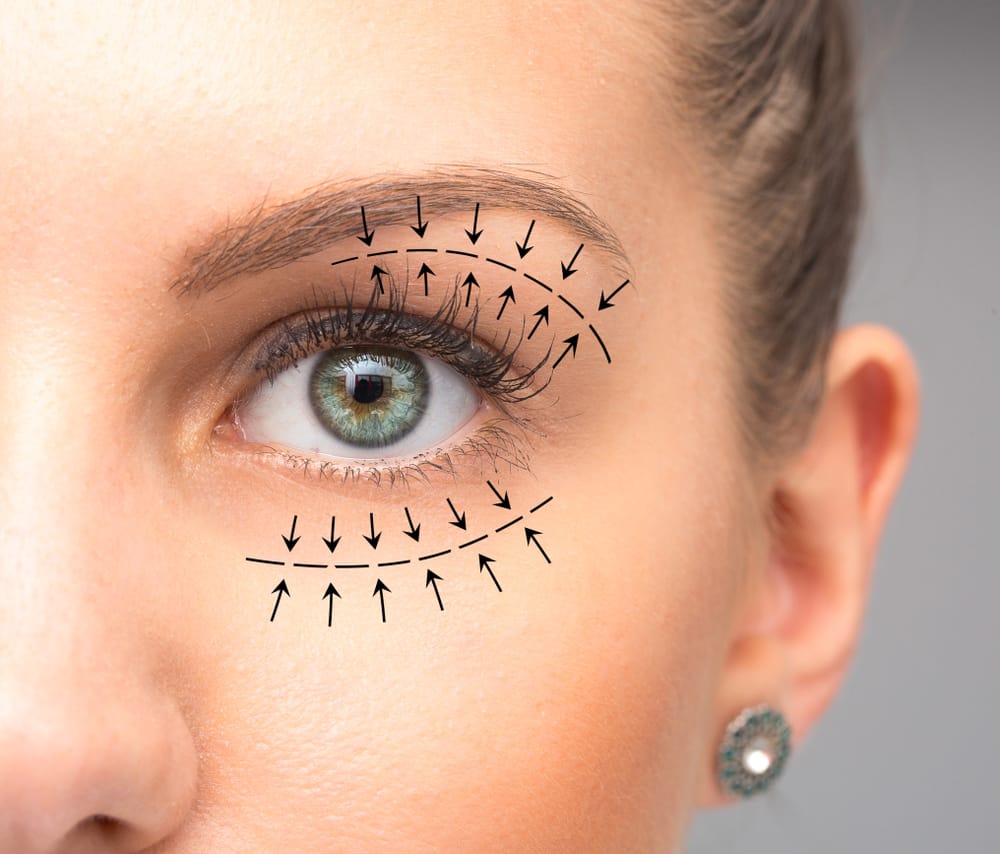- CLINIC
- Medicine
- Dermatology
- PLASTIC SURGERY
- PROGRAMS
- OUR PRICES
Découvrez nos offres sur-mesure en chirurgie esthétique Votre séjour en chirurgie
THE ADVANTAGES : Allows you to remove the sad look, the “beaten dog”, and tired look, and to regain your gaze as it was a few years ago.


“Blepharoplasty” refers to cosmetic surgery of the eyelids which aims to remove the discomfort present, whether it be hereditary or due to age.
They can concern only the two upper or lower eyelids, or even the four eyelids at the same time.
A blepharoplasty can be performed in isolation or be associated with another cosmetic surgery of the face (frontal lifting, temporal lifting, cervico-facial lifting), or even medico-surgical therapy (laserbrasion, peeling, dermabrasion). These acts are likely to be performed during the same intervention or during a second operating time.
THE MOST COMMONLY DISGRASED ARE THE FOLLOWING:
Heavy and drooping upper eyelids, with excess skin forming a more or less marked fold,
Lower eyelids drooping and wilted with small horizontal wrinkles consecutive to skin distension,
Hernias of fat, responsible for “bags under the eyes” on the lower eyelids or upper eyelids “puffy”.
The intervention aims to correct these disgraces in a sustainable way, by surgically removing excess skin and muscle as well as fatty protrusions, and this, of course, without altering the essential functions of the eyelids.
It should be noted that many other alterations may be present, but that their treatment is only possible using more complex techniques than a simple classic blepharoplasty, or by resorting to complementary surgical procedures. This is the case with sagging foreheads and falling eyebrows, “lion” wrinkles between the eyebrows, “crow’s feet” wrinkles at the corner of the eyes, “dark circles”, “ hollow ”,“ sad ”eyes with drooping corner of the eyes, as well as small skin surface imperfections (superficial wrinkles, scars, spots…).
The procedure, performed on both women and men, is commonly performed from the age of 40. However, it is sometimes carried out much earlier, when the disgraces are constitutional (hereditary factors) and not linked to age, like certain “fatty pockets”.
An interrogation followed by an examination of the eyes and eyelids will have been carried out by the surgeon in search of anomalies that may complicate the procedure, or even contraindicate it. A specialized ophthalmological examination will frequently be requested in addition to detect a possible ocular pathology. A pre-operative assessment is carried out in accordance with the prescriptions. The anesthetist will be seen in consultation at the latest 48 hours before the operation. No medication containing aspirin should be taken within 10 days of the procedure. Quitting smoking (or reducing your consumption as much as possible) is strongly recommended one month before and one month after the procedure (tobacco can cause delayed healing). Depending on the type of anesthesia, you may be asked to fast (eat or drink nothing) 6 hours before the procedure.
TYPE OF ANESTHESIA
Three methods are possible:
Pure local anesthesia, where an analgesic product is injected locally to ensure the insensitivity of the eyelids.
Thorough local anesthesia with tranquilizers administered intravenously (“vigilant” anesthesia).
General anesthesia during which you sleep completely.
The choice between these different techniques will be the result of a discussion between you, the surgeon and the anesthesiologist.
TERMS OF HOSPITALIZATION
The intervention can be performed on an outpatient basis, that is to say with an exit the same day after a few hours of monitoring.
However, in some cases, a short hospital stay may be preferable. The entry is then made in the morning and the exit is authorized the next day.


Each surgeon adopts a technique which is specific to him and which he adapts to each case to obtain the best results. However, we can retain common basic principles:
SKIN INCISIONS:
Upper eyelids: they are hidden in the groove located halfway up the eyelid, between the movable part and the fixed part of the eyelid.
Lower eyelids: they are placed 1 to 2 mm under the eyelashes, and can extend a little outside.
The course of these incisions of course corresponds to the location of future scars, which will therefore be hidden in natural folds.
Note: For the lower eyelids, in case of isolated “pockets” (without excess skin to be removed), a blepharoplasty can be performed by trans-conjunctival route, that is to say using incisions placed inside the eyelids and therefore leaving no visible scar on the skin.
RESECTIONS:
From these incisions, the unsightly fatty hernias are removed and the excess loose muscle and skin is removed. At this stage, many technical refinements can be made, to adapt to each case and according to the habits of the surgeon.
SUTURES:
They are made with very fine threads, usually not absorbable (to be removed after a few days).
Depending on the surgeon, the number of eyelids to operate, the extent of the improvements to be made and the possible need for additional gestures, the intervention can last from half an hour to two hours.